I am executing a query in PL / SQL in version 7 and version 14, with a function created by me, and both bring me some results, the rest bring 0. However, when executing the same query in Oracle SQL Developer, the query brings all the results correctly.
I executed the procedure through PL / SQL and Oracle SQL Developer as well, but then none brought me the right result, all the lines were left as "0". I can't find the problem at all, even on Google.
Basically, the function multiplies the number of rows by columns that start with "ID_", as shown below.
Function:
CREATE OR REPLACE FUNCTION DS_FUNCESP.FNBIGB_CheckDataCells
(pOwn IN VARCHAR2,
pTab IN VARCHAR2)
RETURN NUMBER
IS
v_Qtd NUMBER;
v_str VARCHAR2(2000);
BEGIN
v_Qtd := 1;
v_str := ' SELECT
SUM((SELECT COUNT(1) AS QTY_ROWS FROM ' || pOwn || '.' || pTab || ' d WHERE d.LINORIGEM <> ''CARGA MANUAL'')) AS QTY_DATA
FROM DW_FUNCESP.D_BI_COLUMNS a
LEFT JOIN
DW_FUNCESP.D_BI_TABLES b
ON a.ID_TABLE = b.ID_TABLE
AND a.ID_OWNER = b.ID_OWNER
LEFT JOIN DW_FUNCESP.D_BI_OWNERS c
ON a.ID_OWNER = c.ID_OWNER
WHERE b.NM_TABLE = ''' || pTab || '''
AND a.IN_PRIMARYKEY = ''NAO''
AND SUBSTR(a.NM_COLUMN,1,3) = ''ID_'' ';
DBMS_OUTPUT.put_line(v_str);
EXECUTE IMMEDIATE v_str into v_Qtd ;
return (v_Qtd);
EXCEPTION WHEN OTHERS THEN
RETURN 0;
END FNBIGB_CheckDataCells;
Select statement:
SELECT
c.NM_OWNER ,
b.NM_TABLE ,
DS_FUNCESP.FNBIGB_CHECKDATACELLS(c.NM_OWNER, b.NM_TABLE) AS QTY_DATA
FROM DW_FUNCESP.D_BI_TABLES b
LEFT JOIN DW_FUNCESP.D_BI_OWNERS c
ON b.ID_OWNER = c.ID_OWNER;
Results from PL/SQL:
Results from Oracle SQL Developer:
Clearly we can see the difference from any row, the right one is the Oracle SQL Developer. So I'd like to know what is the problem, how to fix, because the procedure is adding "0" to all the rows, no matter where I run.

